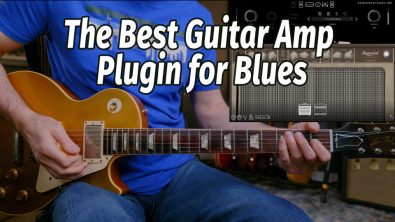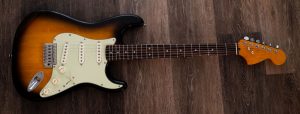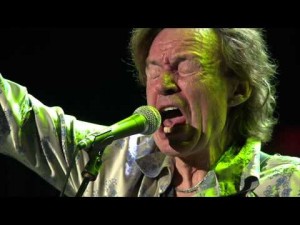 In this blog post I want to help you understand what actually goes into getting a great tone, so you can find that elusive sound you’re looking for.
In this blog post I want to help you understand what actually goes into getting a great tone, so you can find that elusive sound you’re looking for.
It’s one of the biggest topics found on many guitar forums, and can send many people into an endless sea of reviews and YouTube videos. We all know that the 2 main components are the Guitar and the Amp.
But you also need to understand that there are components within the guitar and amp that need to be looked at and setup properly. Just because you have a great guitar and a great amp, doesn’t necessarily mean you will have a great tone.
If your guitar is not intonated properly, or maybe the tension on the neck makes it hard for you to bend, then the guitar will be hard to play and will affect the sound coming out of it. With your amp, it could be a really great one, but if your speakers, or tubes are either blown or real old, it could make that amp sound pretty weak.
So here are the main components of tone which need to be looked at in order for you to achieve the sound you’re looking for.
Guitar
As I talked about in a previous blog post, I feel the guitar is the most significant component of your tone because your hands interact directly with it. Because of this, it needs to be setup to insure that your hands can do what the inspiration of the guitar brings to them. Here’s a checklist to make sure you have everything you need in order.
Intonation
Playing in tune is critical when playing guitar, no matter what you play, if it isn’t in tune then there’s a problem. Setting the intonation on your guitar will allow all the notes everywhere on the neck to be in tune. An easy way to test the intonation is to play each open string, then play the same string fretted on the 12th fret to see if it’s the same note. You’ll need a tuner for this. If they’re not the same note or off by a bit, then the intonation will need to be set.
Action
The action refers to the height of the strings above the fretboard. If this is set too low, then you will bet fret buzz. If it’s set too high, then your guitar will be really hard to play. I also find that using higher action will result in just a little bit fatter tone. SRV, Warren Haynes, and many others use higher action because of this. Try it out. Also, just a tad higher action will make the strings easier to bend. If set too high, then it will make them harder to bend. Find the perfect height for you and you’ll play much better.
Pickups
This is a highly debated area on the internet, and I have not tried out tons of pickups. I have however been able to get the sounds that are in my head with the pickups I use. Make sure you are using at least something decent and you’ll be fine. Sometimes a pickup upgrade can really give you a change in sound without spending a whole lot of money. I like 57 Classics for humbuckers, and Custom Shop 69s for Strats.
Picks
I have come to understand that the type of pick you use can really alter your tone quite dramatically. I use Dunlop Jazz III picks and find them quite versatile for what I like to play. Don’t forget the round side though. Using this side will completely change your tone. Size and thickness will really impact your sound, so try a bunch. If you like playing funk rhythm guitar, then you might want to try a thinner style pick. Works a lot better when you’re really going for a highly percussive sound.
Strings
I get this question all the time about what are the best strings to use. To me, you first need to find out what size you should use. This will take you trying some different sizes out. I personally like .010s the best. Sometimes I like .011’s though for that real deep SRV sound. If I’m using .011s I normally like to tune down half a step. I always keep .011s when playing slide on the SG. It just seems to give you a real fat sound to my ears. The goal is to find out what strings are suitable for you. If the strings you’re using are too big and you can’t bend them to pitch, then you shouldn’t be using them. If you have to use .009s and then build your hand strength up before you try some bigger sizes, then that is fine. You’re much better off using a size that you can play, then using a bigger size that you can’t play just because you think you have to.
Amp
Tubes
If you’re tubes are not working properly, then your amp will have low power and no tone. I tried out a 65 Deluxe Amp at Guitar Center one time and the amp sounded good, but with the volume on 10 it was not hardly loud at all. Check your tubes! If they’re making noises or you’re losing power then you need a new set. It will make a world of difference. I like Groove Tubes.
Speakers
If you’re speakers are blown or wearing out, you won’t be able to get a great tone either. Believe me, I’ve blown out a few speakers after years of playing, and when this occurs the amp won’t sound good. Also trying out different kind of speakers can really change the sound of your amp. I’ve always liked Avatar for purchasing speakers. https://www.avatarspeakers.com/
Reverb
For me, I can’t use an amp unless it has reverb. This is probably why I have never liked Marshall as much as Fender. I’m sure there are many who will say to just use a pedal, but man, the Fender Reverbs are just amazing and really add something to the tone. Even if you just add a tiny bit. I guess you could always use a pedal but it’s just not the same.
Pedals
Overdrive
Once you have a nice clean tone dialed in with your guitar and amp, you’ll either need to crank your amp all the way up for gain, or use an overdrive pedal. Many times cranking a tube amp to distortion volume is not possible, so it’s better to use some sort of overdrive pedal. You’ll have to experiment with what pedals work with certain guitars. I have found that the Ibanez Tubescreamer is great with Single Coil guitars, but with humbuckers or Gibson style guitars they sound too boxy. The best overdrive I have used that contains the best of both worlds and works with all types of pickups and guitars is the Maxon OD 808.
Boost
Sometimes you may need a boost to give your amp a little push from the clean sound. These pedals are totally different than the overdrive pedals and won’t give you a lot of compressed gain. They will however give you a very fat sound and keep the amp sound in there. I like the VL Effects Bullitt Booster.
Tuning
It goes without saying that you must tune your guitar before playing. Through the years I have always had a problem finding a reliable tuner to use. The Boss pedal tuner is great, but sometimes the pedal can be noisy, the battery is dead, or it’s not hooked up. Lately, I’ve been using this Planet Waves clip on tuner and I think it’s just amazing! For only $20 this thing is a must have. https://www.amazon.com/Planet-Waves-Chromatic-Headstock-Tuner/dp/B001PGXIVG/ref=pd_cp_MI_3
Final Thoughts
I also want to go ahead and say that all these recommendations are meaningless unless you know how to play. These tone tips are assuming that you can use your hands, which is the biggest factor when it comes to tone. After you can play to a decent level, there are things that you can do and purchase to take your tone to the next level.
Everyone always says the tone is in the hands and I fully agree. I do know that when you have the tone in your hands, if you get the right gear to accentuate your playing, that is when the magical tone happens.
If the tone was only in your hands, then why purchase expensive guitars and amps. I mean Derek is using nice SG’s and a killer Blackface Super Reverb, and Joe Bonamassa is using tons of vintage gear. So to me it just goes without saying that it is in the hands. This is common knowledge. I think when people try to sound exactly like another artist, this is when that saying should be used.
The real question should be,
“HOW CAN YOU GET YOUR TONE OUT OF YOUR HANDS”.
Thanks for reading,
John W. Tuggle




Great overview of all the components of good tone. There are a lot of items on here that guitarist’s sometimes forget contribute to ones overall tone. Thanks for the reminder!
Nice post. I haven’t seen the basics summed up this nicely anywhere else. With all the “cool stuff” out there it’s easy to forget that simple things like strings and picks can make a huge difference.